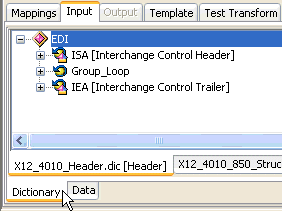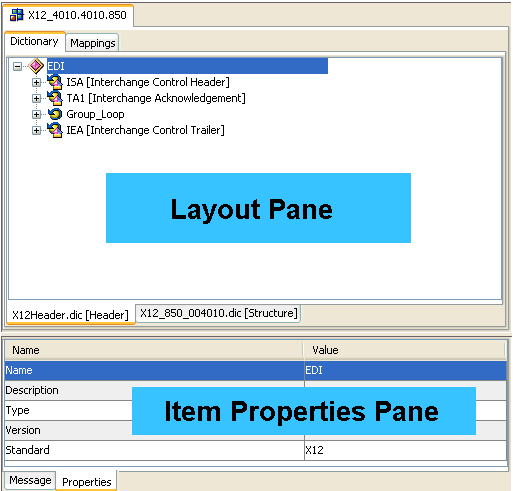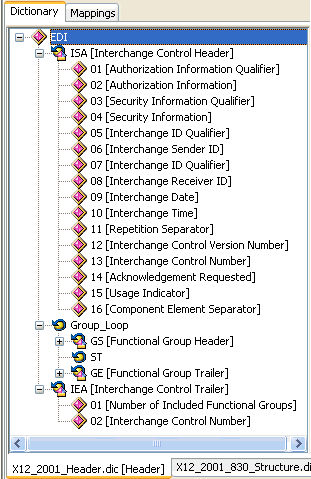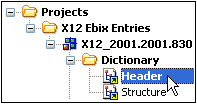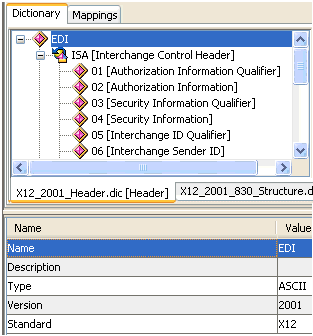Overview
|
In this section: |
Dictionary Builder provides metadata management in EDI, SWIFT, or proprietary projects within iWay Transformer or iWay Service Manager (iSM). It allows composing, editing, and distributing e-business metadata in the form of Ebix components containing data dictionaries, and certain data dictionaries within Transform project components. Dictionary Builder is composed of two major facilities:
- Data Dictionary Editor (Metadata Management Facility)
- Ebix Entry Projects (Ebix Management Facility)
A dictionary is a representation that describes the structure of a transaction or a document that is used in EDI, SWIFT, or proprietary projects.
You can use the Dictionary Builder interface to visualize and browse, in an orderly way, all the components of e-business data dictionaries. You can access the Dictionary Builder interface in iWay Transformer in either of two ways:
- Open a Transform
project (.gxp) that uses a dictionary of supported data formats
for its input or output, as shown in the following image.

- Open an Ebix Entry
project (.ebx), as shown in the following image.

Metadata Management Facility
In iWay Transformer, you can build, browse, and edit standard or custom data dictionaries through the Graphical User Interface (GUI) driven by the Metadata Management Facility. You can export or publish these dictionaries afterwards as Ebix components on an iSM server, or incorporate them as input or output structures for Transform projects. The purpose of a data dictionary is to provide a single global source for custom business requirements for processing your e-business message.
iWay Format Adapters are used to convert EDI or SWIFT formatted messages to XML and vice versa. Data dictionaries are used to define the structure of e-business messages. Data dictionaries contain structural and content information.
To ensure correct processing of the e-business message, the supporting e-business metadata must be supplied in the form of data dictionaries. Data dictionaries are stored as entries within the archives, known as Ebix components.
Currently, the Metadata Management Facility supports the following data formats:
- EDI X12
- EDIFACT
- Fixed Width
- SWIFT
Ebix Management Facility
The Ebix Management Facility enables you to create, update, and browse multiple Ebix entries or export them to Ebix archives. Ebix archives provide a way to efficiently store multiple dictionary components and other related metadata as one executable file. These archive files have an extension of .ebx. In this guide, they are referred to as Ebix archives. The design of Ebix archives advances the concept of iWay packages by providing seamless integration with iSM components.
In design time, you can import each of the data dictionaries and its related metadata components in iWay Transformer as one unit, called an Ebix Entry. An Ebix Entry is managed in iWay Transformer through an Ebix Entry project, a type of project that supports Dictionary Builder views. You can then export single or multiple Ebix Entry projects opened in iWay Transformer as Ebix archives or publish them on the server as Ebix components.
The Ebix Management Facility supports the following data formats:
- EDI HIPAA
- EDI X12
- EDIFACT
- HL7
- SWIFT

